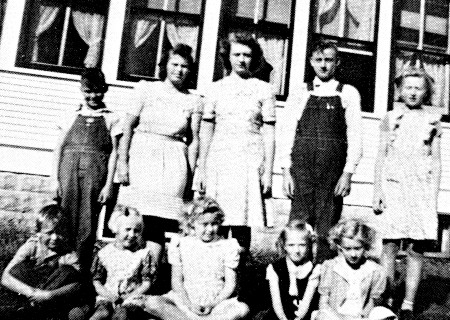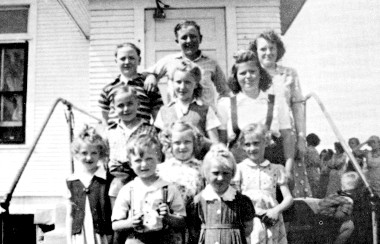

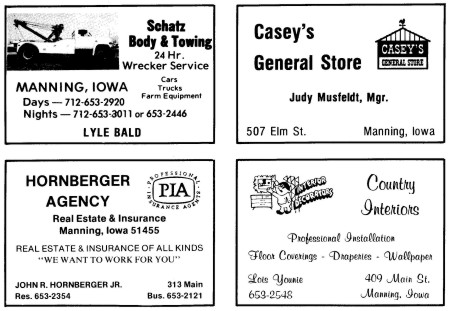
Page 106


Page 107

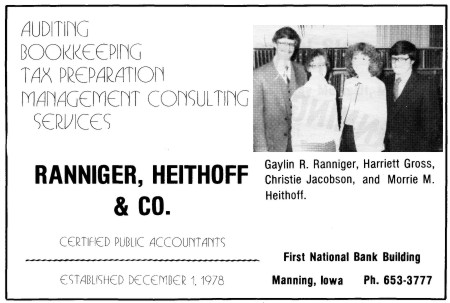
Page 108

Page 109
Days of Rural Schools

Country schools are no longer in existence in this area, so it is an appropriate time to reminisce as to what schools and teaching were like back in the early 1900s. In those days, the teacher was usually a young woman, barely older than some of the students she taught; she had to teach all grades, kindergarten through eighth; had to be her own janitor; she had to carry out the ashes from the stoves or, in later years, from the furnaces; and she had to build the fire for the morning heat. The school teacher or students had to bring in the drinking water and washing water, either from a well on the school grounds or from the nearest neighbor, as there was no indoor plumbing; there was no electricity, either, until the late 1930s.
The teacher had to sweep and scrub the floors often, especially the halls where all the muddy boots were kept. Children arrived in horse-drawn buggies, wagons, and even sleds in extremely cold weather or in drifting snow; in spring, they came through muddy roads, as graveled roads were very scarce then. For the most part, though, both the teacher and the students walked, some a mile or more, and they had to prepare for the journey by dressing warmly.
Most school yards had caves to go into for shelter in the case of storms, especially those dreaded tornados. The school yard also had an outhouse, which always seemed to be too close to the school in the warm spring and fall, but much too far away in the winter time. In the late 1930s, some of the rural schools received indoor chemical restrooms, but others never did receive indoor plumbing.
Usually every fall, there was a two weeks' corn picking vacation so the children could help their parents with the corn harvest.
When electricity became available at the schools, children had access to hot lunches, instead of always the cold meals they brought from home in their dinner pails.
School programs and box socials were always enjoyed by the parents and neighbors, and a family picnic was always held at the end of the school year in May.
In the fall of 1959, country school districts were reorganized and children were bused into town schools; this ended an era of unforgettable memories of country school days. Rural school sites were usually sold back to adjoining land owners, and most of the school houses were either torn down or moved elsewhere, and the ground was generally turned into farmland
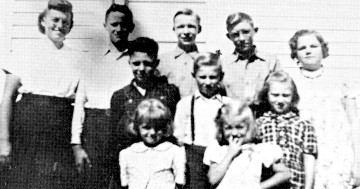
Page 110

ODDS AND ENDS
We attended Iowa Township No. 2 School, with Melvina Kuhl as teacher. Our school was a standardized
school, meaning we'd receive state aid after meeting certain requirements. One
requirement was to give three community programs, usually at night, during the
school year. Parents and members of the community would come to watch the
students perform, and we'd have pie and coffee after the entertainment, with
the pies furnished by the students' mothers.
One year, due to inclement weather, the program was postponed. When good
weather finally came, school was dismissed at 2:30 and we were all sent 'home
to tell our mothers to bake pies. That evening, all 26 pies were raisin pies.
Lucille (Lamp) Boell
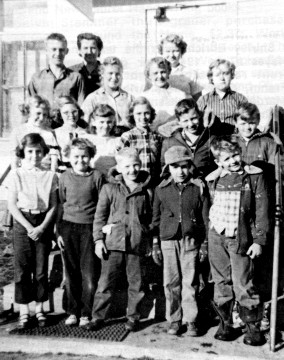
NOTE: This picture was taken 33 years later than the 1925 photo, shown on the following page. These are the children of some of those in the 1925 picture. Many of the children's grandparents also went to Hayes No. 7.
Page 111

